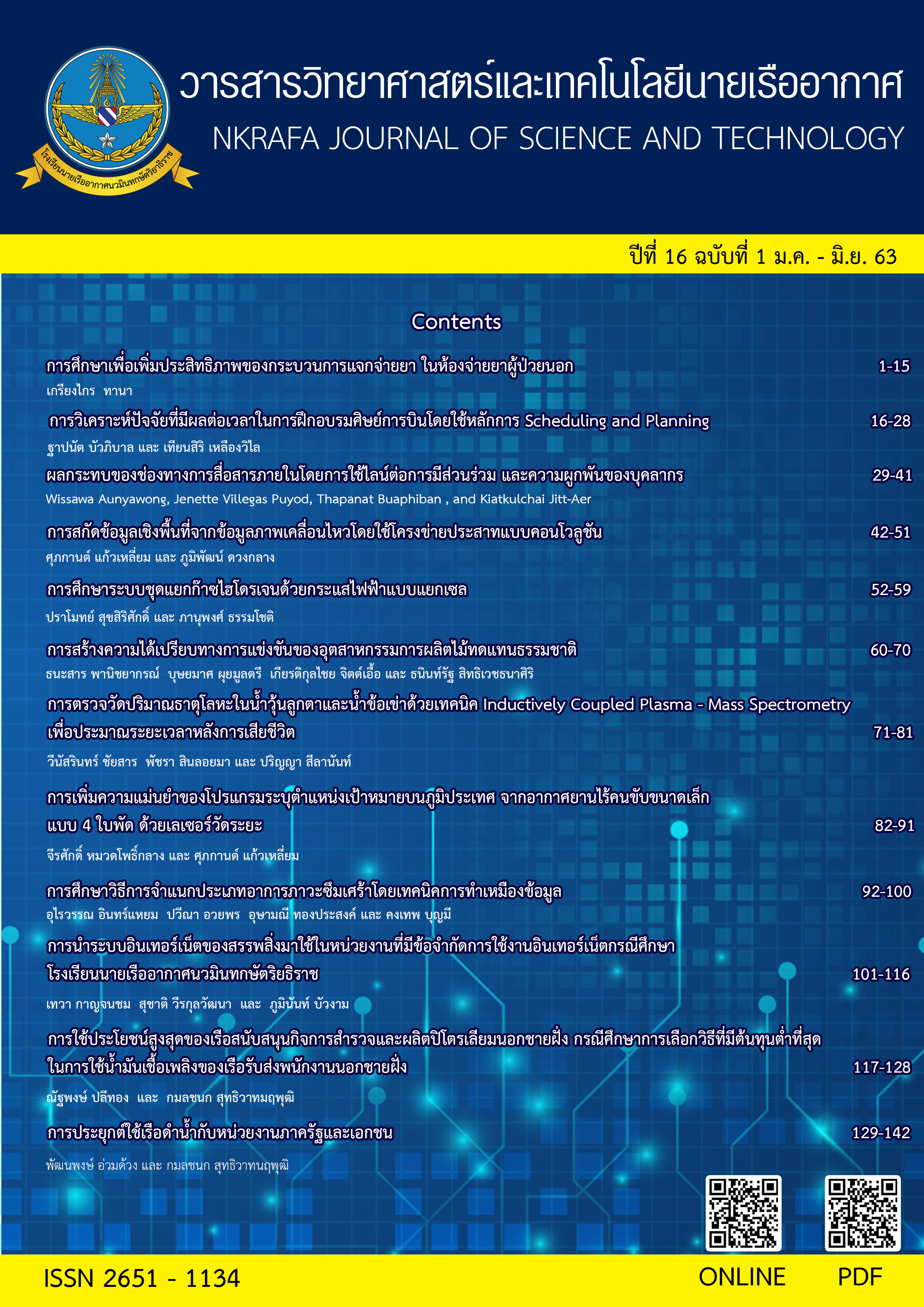The Study of Depression Classification Using Data Mining Techniques
Main Article Content
Abstract
In recent times, depression has been talked about a lot. Depression can result in patients with physical, mental, and mental symptoms. These symptoms can affect daily life, such as eating less food, loss of appetite, insomnia, hopelessness, depression, feeling that himself is not happy with life. Always worried and most importantly, patients will not be able to deal with the problems that are faced properly. There are approximately 322 million people with depression worldwide, representing 4.4 percent of the world's population and Thailand. Depression is another problem. This research the development Web Application Screening for General Risk of Depression Using Techniques Data Mining for assess or want to test whether they are in the safety criteria or not and can be timely by the researchers collecting data from books and websites 100 list, And the results are divided into 4 formats normal, minimal, middle, severe. And have chosen data mining techniques to create models in the research project which are Decision Tree, Support Vector Machine, Neural Network to find the best model that can be used to develop Web Application Screening for General Risk of Depression Using Techniques Data Mining that is accurate and most performance.
Article Details
- Content and information in articles published in NKRAFA Journal of Science and Technology are comment and responsibility of authors of articles directly. Journal editorial do no need to agree or share any responsibility.
- NKRAFA Journal of Science and Technology Articles holds the copyright of the content, pictures, images etc. which published in it. If any person or agency require to reuse all or some part of articles, the permission must be obtained from the NKRAFA Journal of Science and Technology.
References
ไทยรัฐฉบับพิมพ์. (15 ธันวาคม 2562). “ป่วยโรคซึมเศร้าเปลือยดิ่ง 24 ชั้น.” สืบค้นจาก https://www.thairath.co.th/new/ local/bangkok/1726275
ไทยรัฐออนไลน์. (8 มกราคม 2563). ส่องตำรวจ : “ตำรวจกับโรคซึมเศร้า” สืบค้นจาก https://www.thairath.co.th/new/local/1741745
MATICHON ONLINE. (10 มิถุนายน 2562). “กรมสุขภาพจิตห่วงวัยรุ่น “เยาวชนไทย” มีภาวะซึมเศร้า แนะคนรอบข้างรับฟัง อย่างเข้าใจ.” สืบค้นจาก https://www.matichon.co.th/loca/quality-life/news_1532486
โพสต์ทูเดย์. (07 พฤษภาคม 2562). “โรคซึมเศร้า...เรากำลังเป็นหรือป่าว” สืบค้นจาก https://www.posttoday.com/life/healthy/588406
Alodokter. (1 ธันวาคม 2559). “ความหมาย โรคซึมเศร้า.” สืบค้นจาก https://www.pobpad.com/โรคซึมเศร้า
ดร. เอกสิทธิ์ พัชรวงศ์ศักดา, (2557). “การวิเคราะห์ข้อมูลด้วยเทคนิคดาต้า ไมน์นิงเบื้องต้น”, พิมพ์ครั้งที่ 2, 7 – 15. บริษัท เอเชีย ดิจิตอลการพิมพ์ จำกัด
กรมวุฒิ นงนุช อนุชา ซาเฮาะ และ สุวุฒิ ตุ้มทอง, “การวิเคราะห์บทความอัตโนมัติ โดยใช้ กระบวนการภาษาธรรม ชาติ”, ในการประชุมวิชาการระดับชาติมหาวิทยาลัยเทคโนโลยีราชมงคลสุวรรณภูมิ, วันที่ 22 มิถุนายน 2559, ณ มหาวิทยาลัยเทคโนโลยีราชมงคลสุวรรณภูมิ จ.พระนครศรีอยุธยา, หน้า 473.
บุญมาร., & จิระวิชิตชัยน. “การจำแนกประเภทผู้ป่วยโรคเบาหวานโดยใช้เทคนิคเหมืองข้อมูล และการเลือก คุณลักษณะจากความสัมพันธ์ของข้อมูล.” วรสาร, ปีที่ 3, ฉบับที่ 2, หน้า 11-19, 2562.
N. Bidi and Z. Elberrichi, "Feature selection for text classification using genetic algorithms," 2016 8th International Conference on Modelling, Identification and Control (ICMIC), Algiers, 2016, pp. 806-810.
นพมาศ ปักเข็ม. ชนิดา จันมณีย์ และ ศิวกร อุยสุย. “การจำแนกประเภทภูมิปัญญาท้องถิ่นของไทยแบบอัตโนมัติโดยวิธีการทางเหมืองข้อมูล” บทความวิจัย, ปีที่ 20, ฉบับที่ 3, หน้า 300-307, 2560
ณัฐวดี หงส์บุญมี และ ธนภัทร ธรรมกรณ์. “ระบบคัดกรองผู้ที่เสี่ยงต่อภาวะซึมเศร้าผ่านสมาร์ทโฟนโดยใช้เทคนิคเหมือง ข้อมูล”วารสารมหาวิทยาลัยศรีนครินทรวิโรฒ (สาขา วิทยาศาสตร์และเทคโนโลยี), ปีที่ 11, ฉบับที่ 21, หน้า 100 - 113, 2562
Fan, Wen & Sun, Shutao & Song, Guohui. (2011). “Probability adjustment Naïve Bayes algorithm based on nondomain-specific sentiment and evaluation word for domain-transfer sentiment analysis.”, Eighth International Conference on Fuzzy Systems and Knowledge Discovery, 26-28 July 2011, Shanghai, China, pp. 1043-1046


